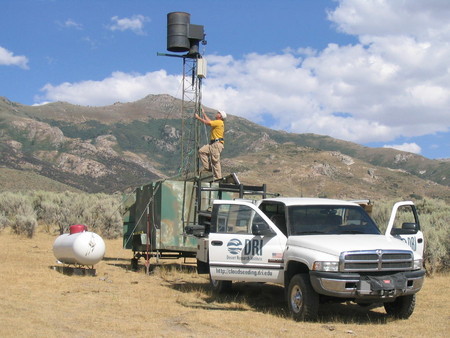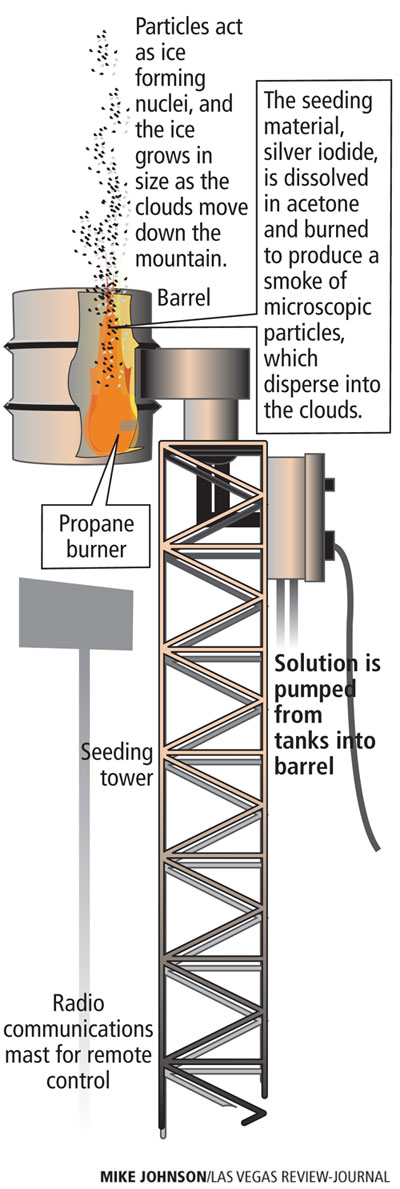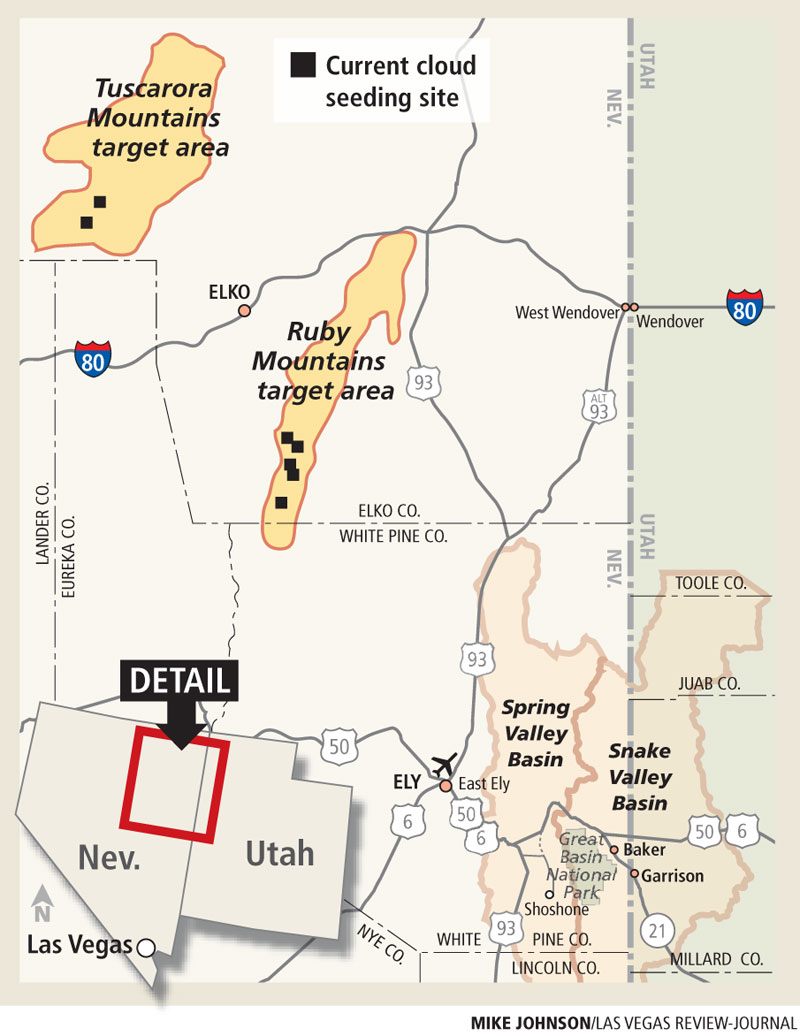Funding avoids shutdown of decades-long program
The Southern Nevada Water Authority hopes to squeeze a little extra water from the sky by reviving a cloud-seeding program doomed by state budget cuts.
For decades, the state's Desert Research Institute operated snow generators in northeastern Nevada and around Lake Tahoe, but the program was due to be mothballed this winter amid deep cuts to the state's higher education system.
In a unanimous vote Thursday, water authority board members approved funding that will allow cloud seeding to continue in northeastern Nevada.
The money, which could total almost $900,000 over the next three years, would cover the operation of six snow generators in the Ruby Mountains southeast of Elko and one generator in the Tuscarora Mountains northwest of Elko.
"This is very good news," said Arlen Huggins, an associate research scientist for DRI in Reno.
Water authority officials think so, too, though any benefits to the local water supply will be difficult to measure.
The two mountain ranges are more than 400 miles north of Las Vegas and at least 200 miles north of any of the groundwater basins the authority hopes to tap someday across eastern Nevada.
Kay Brothers, deputy general manager for the water authority, said at least some of the snow generated could fall farther south in the mountains above the two White Pine County basins that will anchor the authority's multibillion-dollar pipeline project.
Authority spokesman J.C. Davis said extra snow in the Ruby Mountains also could wind up down here because the range lies at the top end of a huge regional groundwater flow system that connects to basins in Lincoln County where pumping is planned.
"What's good for the (regional) hydrology is good for us," Davis said.
According to DRI estimates, cloud seeding on average produces an extra 15,850 acre-feet of water a year in the Ruby Mountains and 6,770 acre-feet a year in the Tuscarora Mountains.
One acre-foot of water is enough to supply two average Las Vegas homes for one year.
"It's hard to quantify if (the snow) would have fallen anyway or not," Brothers said.
But though cloud seeding "is not an exact science by any means," it is still a pretty good investment, she said. "It's very economical to do this."
Board members approved $311,000 for cloud seeding this winter and gave authority General Manager Pat Mulroy the option to extend the funding for two additional years at a slightly lower cost.
Before the vote, board member Steve Kirk asked whether any neighboring states have complained that cloud seeding steals their snow before it gets to them.
"I just wondered if it was something else for Utah to be mad at us about," he said.
Brothers said the authority had received no such complaints.
Mulroy said the complaints generally work the opposite way. They come from people who blame cloud seeding after their homes are damaged by heavy snows.
In Nevada, DRI seeds the clouds with microscopic particles of silver iodide, a compound on which ice particles readily form.
The chemical can be released from airplanes or from ground-based generators that dissolve it in acetone and burn it to produce particle-laden clouds of smoke that are drawn up into passing storms.
Researchers trigger the ground stations remotely by computer link when weather conditions are right for making snow.
Huggins said cloud seeding was pioneered in the 1940s and 1950s, largely in an attempt to bring more rain to farms and fill high mountain reservoirs for hydroelectric power generation.
The process has been used in the Lake Tahoe area since the 1960s.
DRI started seeding clouds over the Ruby Mountains in 1981 using surplus generators from the U.S. Bureau of Reclamation.
In 2007, the institute supplied equipment for cloud seeding operations in Colorado designed to increase snowfall near the headwaters of the Colorado River, which supplies water to roughly 25 million people in seven states.
The Las Vegas Valley draws 90 percent of its drinking water from the river by way of Lake Mead.
Huggins said DRI also will continue seeding clouds in the Tahoe area this winter, thanks to funding help from the Truckee Meadows Water Authority.
That money almost came through too late to get the generators ready for the snow season, Huggins said.
Many of the sites are remote and cannot be reached at all after snow begins to accumulate, "so we just barely got all the seeding sites in before a big storm hit Tuesday," he said.
Contact reporter Henry Brean at hbrean@reviewjournal.com or 702-383-0350.



















